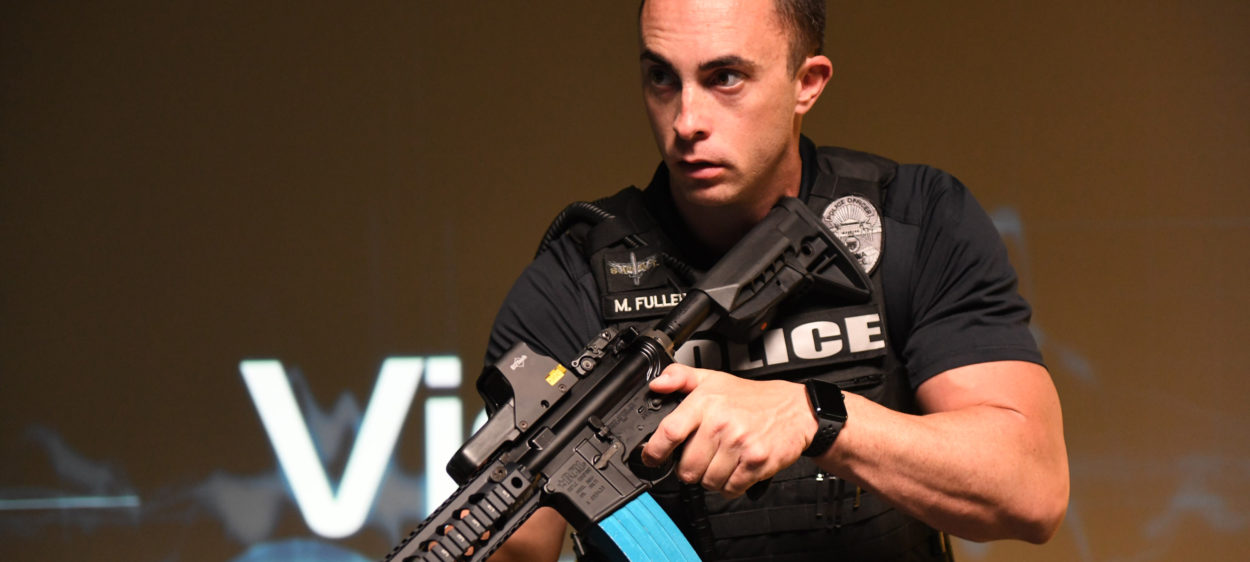
Most law enforcement trainers would agree that the skills they teach are what makes officers effective and safe. Most trainers probably groaned or rolled their eyes when they saw the title of this post… and that’s ok! This means you recognize that there is a difference in your values and the values of the Millennial officers that you’re teaching.
Change and adjusting to change makes us more efficient, safer and effective at what we do. Fifty years ago, officers used revolvers, and electronic control weapons had not been invented yet. Today, officers use semi-automatic handguns and ECW’s allow officers to control subjects in a manner that is safer for everyone. As a law enforcement instructor, one must change and adjust according to who they are teaching, specifically which age group students fall in to. Since each generation has its own set of values, they are all going to learn in a different way.
Millennials (generally born between 1981-1996) have been a part of law enforcement for the better part of a decade, and they will continue to enter the force over the next few years. If your department’s training style hasn’t changed, there is a chance that a significant number of officers aren’t fully benefiting from what is being taught.
A recent Mayo Clinic study found that Millennials tend to learn best in an environment that uses technology, has feedback on their behaviors and allows for participative/interactive encounters.* Using this information, an instructor can begin to form lesson plans that best suit this type of learning environment. Here’s how such a plan can be crafted using a VirTra training simulator.
Start training sessions with an overview of the skills and tactics that will be taught
Instructors should start a training session with a brief overview of the skills or tactics that will be taught. Keeping segments to 10-15 minutes is optimal, as Millennials generally operate at “twitch speed.” This means that they will get bored quickly if the style or content doesn’t change frequently. This is a direct reflection on how their attention is in general. On average, Millennials switch between platforms such as laptops, phones, tablets, and television 27 times per hour.^
Switch to a simulator to use the skills that were just taught
After an overview, switch to the simulator to allow the student an opportunity to use the skills that were just taught. The simulator provides the necessary interaction and participation component of millennial learning. The blending of technology with real-world application is the perfect way to engage and effectively train the Millennial officer. The student officer will be able to see how they progress in real-time, giving them the instant feedback they crave. Millennials don’t fear correction, but they don’t like failure. This moves us to the final phase of Millennial training in the simulator: the debrief.
Debrief after completion of the scenario
After the student completes the scenario, it is essential that the trainer uses the debrief feature. The ability to give the Millennial student immediate feedback on their performance can be one of the strongest teaching moments. Replaying the scenario and showing the officer when they did, or didn’t, take action will be extremely valuable. It’s also important to allow the student an opportunity to give feedback as well. Allowing them an opportunity to explain their actions helps with another Millennial value, the buy-in. Showing that their opinions and observations are valuable will enable them to be more receptive to what is being taught. It also gives credibility and respect to the trainer, which is a necessary component of the learning process.
The sooner trainers accept that there are generational differences within ranks, the quicker they will become more effective. Hopefully, the generations before the Millennials have given them the knowledge and skills necessary to lead a long and safe career. When the Millennial officer becomes the Millennial trainer, they will have to adjust for whoever comes next.
Stay safe! Stay dedicated!
To learn more about how your agency can benefit from using VirTra simulation training, click here to contact our team.
References:
* Janeve R. Desy, M., Darcy A. Reed, M. M., & Alexandra P. Wolanskyj, M. (2017, February). Milestones and Millennials: A Perfect Pairing-Competency-Based Medical Education and the Learning Preferences of Generation Y. Mayo Clinic Proceedings, pp. 243-250.
^ Kratz, H. (2013, June 24). Maximizing Millennials: The Who, How, and Why of Managing Gen Y. Retrieved from onlinemba.unc.edu: https://onlinemba.unc.edu/blog/geny-in-the-workplace/
Recently Published
Join Our Newsletter







